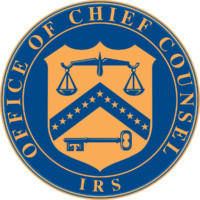Originally published on Passive Activities and Other Oxymorons on December 24, 2010.
______________________________________________________________________
There have been quite a few items of interest from the chief counsel’s office. Here is what I think was worth noticing through mid December. I’ve got next week ready to go and these will start getting stale, so I’ll make this a Merry Christmas bonus post.
CCA 201049041
The IRS will not transfer or redesignate a payment that has been applied to a taxpayer’s account to satisfy a different liability of the taxpayer if the payment was applied according to the taxpayer’s instructions. If the IRS applies a payment contrary to a taxpayer’s instructions, the IRS will, upon request by the taxpayer, transfer the payment to the intended tax liability.
A corporation that believes it will have overpaid its estimated tax for the tax year may apply for a quick refund on Form 4466, Corporation Application for Quick Refund of Overpayment of Estimated Tax, before the 16th day of the 3rd month after the end of the tax year at issue, but before it files its income tax return, if the overpayment is at least 10% of the expected tax liability and at least $500. A corporation should not file Form 4466 before the end of its tax year.
If you run into cash flow problems it would be nice if you could apply estimated income tax payments to payroll tax deposits, which have much more ferocious penalties. No such luck though. An estimated income tax payment is gone at least until after the end of the year in question.
CCA 201049040
As we discussed, we agree with your conclusion. Lines 3 and 8 of Form 6251 do not apply to taxes incurred in connection with a trade or business. See § 56(b)(1)(A), (b)(1)(D); Reg § 1.62-1T(d)
There is an AMT preference for taxes, but it would not apply, for example, to real estate taxes on Schedule E for a rental property. I don’t think the principle extends to state income taxes attributable to a Schedule C activity.
CCA 201049035
The email responds to your request for assistance. You asked for advice regarding whether there is any limitations period applicable to reducing tax liability based on a net operating loss (NOL) carryback.
Section 6511(a) provides that a “laim for credit or refund of an overpayment . . . shall be filed by the taxpayer within 3 years from the time the return was filed or 2 years from the time the tax was paid, whichever of such periods expires the later.” Section 6511(d)(2) provides an additional special period of limitation with respect to a claim for a refund or credit relating to an overpayment attributable to a NOL carryback. The relevant portion of section 6511(d)(2) provides, in lieu of the 3 year period of limitation prescribed in section 6511(a), the period shall be the period ending 3 years after the due date of the return (plus extensions) for the taxable year of the NOL.
In this case, the Service disallowed the taxpayer’s purported claim for credit because it determined that it was untimely. However, you provided that the NOL carryback, if allowed, would not result in an overpayment which would generate a credit or refund but would simply reduce the taxpayer’s outstanding tax liability. Even though there are restrictions on the time within which the Service may allow a claim for credit or refund, no such statutory impediments exist to prevent the carryback of an NOL to reduce a taxpayer’s outstanding tax liabilities.
This might be of interest to someone dealing with collections who has had things go from bad to worth. Possibly a carryback from a subsequent disastrous year can alleviate an outstanding debt.
CCA 201049030
Subject: Filing joint return after filing of substitute for return ————
You asked whether a taxpayer can elect joint status after the Service has filed a substitute for return under section 6020(b) and has issued a notice of deficiency to the taxpayer. The Tax Court held in Millsap v. Commissioner, 91 T.C. 926, 936-937 (1998), acq. in result, AOD-1992-03, that a taxpayer is not foreclosed from electing joint status after the Service has prepared a return under section 6020(b) because the return does not constitute a “separate return” filed by the individual for purposes of section 6013(b). Because the taxpayer has not previously filed a separate return in this case, section 6013(b) does not apply, therefore, the taxpayer may file a joint return provided that none of the exceptions in section 6013(a) apply.
Section 6013(a)(2) states that “in the case of death of one spouse the joint return may be made by the surviving spouse . . . if no return for the taxable year has been made by the decedent, no executor or administrator has been appointed, and no executor or administrator is appointed before the last day prescribed by law for filing the return of the surviving spouse.” The facts that you provided did not state whether an executor or administrator had been appointed. Thus, if an executor or administrator was not appointed, the taxpayer may file a joint return with respect to himself and his deceased spouse. See IRC section 6013(a)(2).
If you are married and he Service does your return for you it will be married filing separately. You may be able to reduce the tax if your spouse will consent to a joint return. If your spouse happens to be dead, you might be able to consent for them. Definitely has the makings of a Law and Order episode.































































































